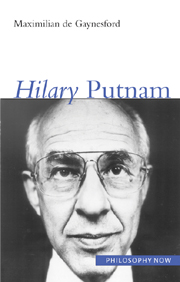4 - Structural issues
from Part II - Character
Summary
He saw that he was confronted, actually, with two propositions. The first was simple: “The circumstances are such that I must concentrate on so-and-so”. The second was less simple: “The circumstances have been so contrived as to suggest that I must concentrate on so-and-so”. In pursuing the first proposition he must, at least, not lose sight of the second.
Michael Innes, Death at the President's Lodging (1958: 18–19)Midway through his career, Putnam reflected on its beginnings. He stressed four basic issues on which he had been most susceptible to influence: realism, rationality, meaning and intentionality (Putnam 1975e: 153–91). Their combination produced a fifth: a function-based approach. Each issue speaks of the impact of European philosophers in general and of positivists such as Reichenbach in particular. Each expresses themes that, in isolation and in combination, provide structure to his philosophical contributions.
In retrospect, Putnam's thinking has been susceptible to two kinds of basic stimulus and inspiration. What we might call the “core influences” were positions taken on basic issues that affected his thinking at its heart; “structural influences” were positions taken on basic issues that shaped and organized his thinking, but not in quite so fundamental a way. Of the five issues just mentioned, a function-based approach and intentionality belong to the first set, and realism, rationality and meaning to the second. In order to appreciate the role that the core influences played, we must first examine the structural influences.
- Type
- Chapter
- Information
- Hilary Putnam , pp. 32 - 44Publisher: Acumen PublishingPrint publication year: 2006



